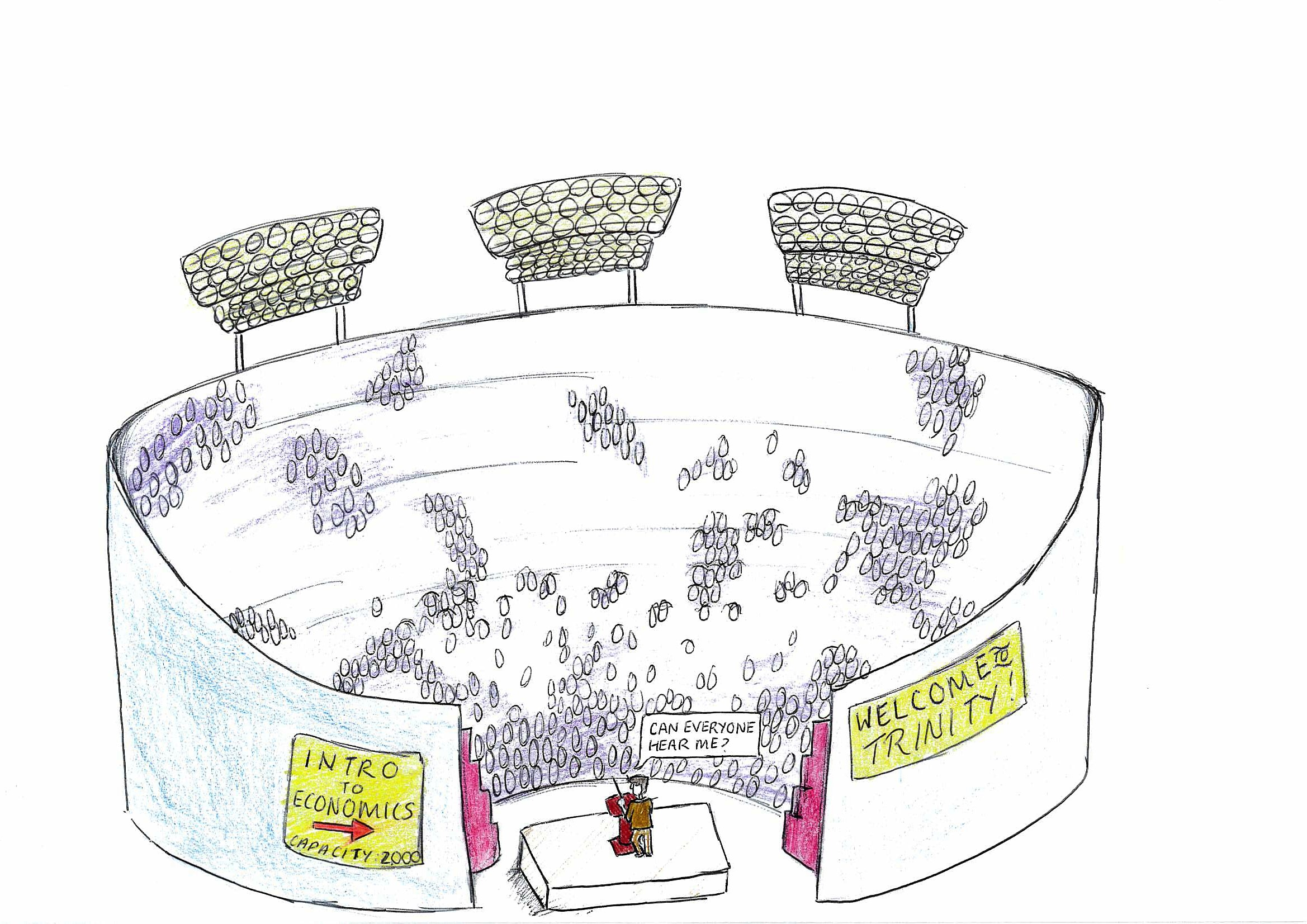
Many students have an idea of the perfect tutorial: a classroom of ten or twelve people, all passionate about their course, a full hour filled with intellectual discussion about Shakespeare, sand dune migration or how the body works. Yet we show up and it is 50 minutes of awkward silence, forced conversation, and a TA doing their best to learn a new group of names.
Tutorials could be better. As a TSM English and World Religions & Theology student, I only
have two tutorials this term and, while my tutorials are significantly better than last year, there’s a long way to go before I’ll be fully excited for a tutorial.
Trinity is one of the best universities in the world, and yet our tutorial rooms are cramped and either freezing cold or sweltering hot. They are not conducive to a productive discussion. Roundtable scenarios are ideal and, yes, some classrooms have the tables set up in a circle, but others are just those creaky chairs with a “desk” attached, all scattered around the room.
My English tutorials have so much potential to be excellent. From stereotypical literature students to the person you’d never thought would go near a book, we all have a lot to say. And, yet, our discussion surrounding Wuthering Heights was good but far from great.
Wuthering Heights is a literary classic. There is so much to say about Cathy and Heathcliff’s relationship and the role of Lockwood. But there is not enough time to fully dive into the cold grey moors of England. I want more. I want classes of no more than ten students and I want at least an hour and a half allotted to each tutorial.
Why should we have longer tutorials? By the time the TA has taken attendance, made an awkward comment about how many people are missing, and then asked how our weekends were, we’ve lost five minutes. Then there is the silence while the TA ruffles through papers in an effort to decide where to begin. Once we actually get around to discussing the novel, poem, or play, it’s been almost ten minutes.
I am sure that many tutors would love more time to talk about their subject and to engage with the students. We’re all there, ultimately, because of a desire to learn. It ought to be a give-and-take and both students and tutor need to be given more time to talk. If tutorials were an hour and a half then there would be time for the awkward first ten minutes and the closing five to talk about next week. Imagine how much more you could learn if there were more time for a facilitated discussion.
Some TAs are great: highly prepared and knowledgeable about the subject. Others expect the students to lead themselves. Ideally, we would know how to lead our own discussion and ask all the right questions. However, we’ve also got other tutorials to prepare for and more reading to do. With more structure and open questions, tutorials could go a lot further.
That being said, many times, someone finds their feet because the tutor raises a question or topic and the student can run with it. Some of the best tutorials I’ve had are those where we spend at least a solid thirty minutes discussing the reasoning behind the landscape of a novel.
However these wonderful discussions have often been brought to a screeching halt when the TA remembers the other topics we need to address and then all the students fall silent, having nothing else to say and wanting only to continue talking about the previous subject.
Students need more of a reason to attend and prepare for tutorials. If you know your TA will dominate the discussion and your participation is minimal, why bother doing the readings only to sit quietly for an hour? Controversial though it is, mandatory presentations, even for five minutes, from each student each tutorial would be a great way of forcing students to read and prepare for a discussion.
In my experience, tutorials with mandatory presentations yield better and more lengthy discussions. Yes, it is stressful to reach Sunday night and realize you’re presenting Tuesday afternoon but the advantages will outweigh the stress. You’ll have a better and more in-depth understanding of the topic which will benefit you come essay or exam.
Will tutorials get better anytime soon? Who knows. A systemic change is needed to improve them. With more time and more student presentations, or at least more student choice regarding the discussion topics, tutorials could be what they are meant to be: a space for close readings, where students can grow and expand their knowledge.






